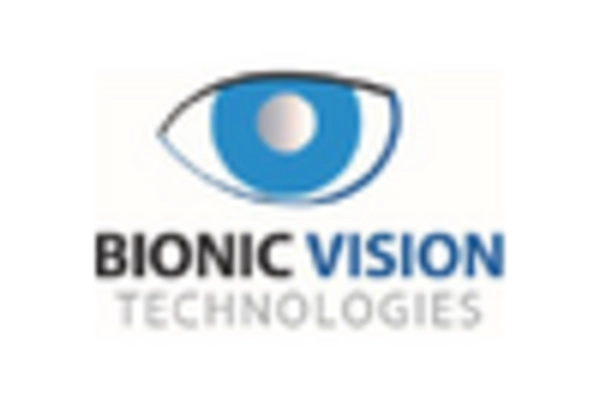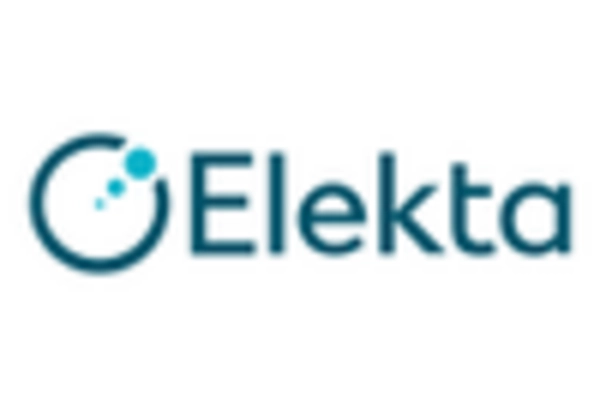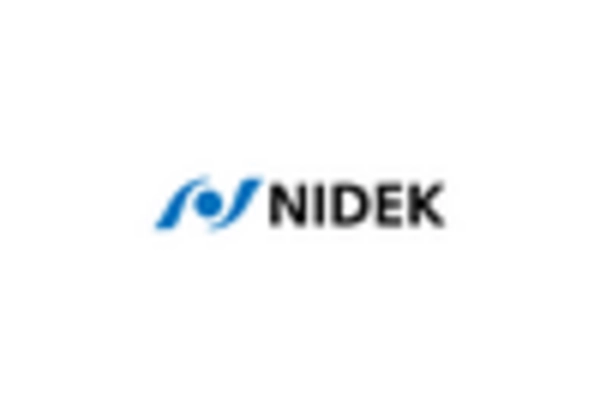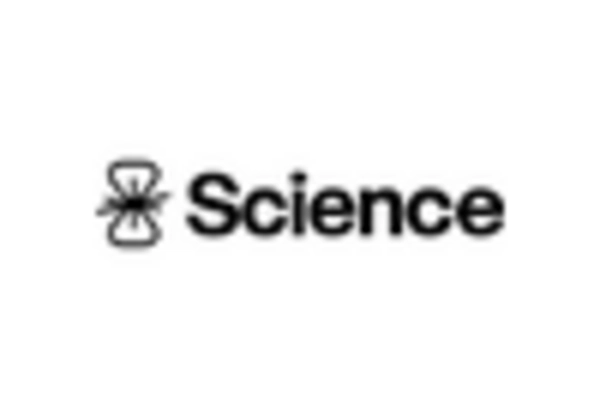Growing Awareness of Vision Health
The increasing awareness of vision health among the US population is a notable driver for the artificial retina market. Public health campaigns and educational initiatives are emphasizing the importance of regular eye examinations and early detection of retinal diseases. As individuals become more informed about the risks associated with vision loss, there is a corresponding rise in demand for advanced treatment options, including artificial retina devices. This heightened awareness is likely to lead to earlier diagnoses and increased patient engagement in treatment decisions. Consequently, the artificial retina market may experience growth as more patients seek out innovative solutions to preserve and restore their vision. Healthcare providers are also adapting to this trend by incorporating discussions about artificial retina technologies into their patient care protocols.
Increased Funding for Vision Research
The artificial retina market is benefiting from increased funding for vision research in the US. Government agencies, private foundations, and venture capitalists are recognizing the potential of artificial retina technologies to address unmet medical needs. In recent years, funding for retinal research has surged, with millions of dollars allocated to projects aimed at developing innovative solutions for vision restoration. This financial support is crucial for advancing clinical trials and bringing new products to market. As a result, the artificial retina market is likely to see a rise in the number of viable products, enhancing competition and driving down costs for consumers. The influx of capital into this sector may also lead to collaborations between academic institutions and industry players, further accelerating the pace of innovation.
Rising Incidence of Retinal Disorders
The increasing prevalence of retinal disorders in the US is a primary driver for the artificial retina market. Conditions such as age-related macular degeneration (AMD) and retinitis pigmentosa are becoming more common, affecting millions of individuals. According to recent estimates, AMD alone impacts approximately 2.1 million people aged 50 and older in the US. This growing patient population necessitates innovative treatment options, thereby propelling demand for artificial retina technologies. As healthcare providers seek effective solutions to address these conditions, the artificial retina market is likely to experience substantial growth. The potential for improved patient outcomes through advanced retinal implants further enhances the attractiveness of this market. Stakeholders aim to invest in cutting-edge technologies that can restore vision and improve quality of life for affected individuals.
Collaborations Between Industry and Academia
Collaborations between industry and academic institutions are emerging as a significant driver for the artificial retina market. These partnerships facilitate the exchange of knowledge and resources, leading to accelerated innovation in retinal technologies. Universities and research centers often possess cutting-edge research capabilities, while industry players bring expertise in product development and commercialization. Such collaborations can result in the rapid translation of research findings into practical applications, enhancing the artificial retina market's growth potential. Furthermore, joint ventures may attract additional funding and resources, enabling the development of more sophisticated devices. As these partnerships continue to flourish, the artificial retina market is likely to benefit from a steady stream of innovative products that address the needs of patients with retinal disorders.
Technological Innovations in Vision Restoration
Technological advancements in vision restoration are significantly influencing the artificial retina market. Innovations such as wireless communication systems, improved biocompatibility of materials, and enhanced image processing algorithms are paving the way for more effective artificial retina devices. For instance, recent developments in microelectronic systems have led to the creation of devices that can interface directly with retinal cells, potentially improving visual acuity for users. The market is projected to grow at a CAGR of around 15% over the next five years, driven by these technological breakthroughs. As research institutions and companies continue to invest in R&D, the artificial retina market is expected to expand, offering new solutions that could transform the lives of individuals with vision impairments.

















Leave a Comment